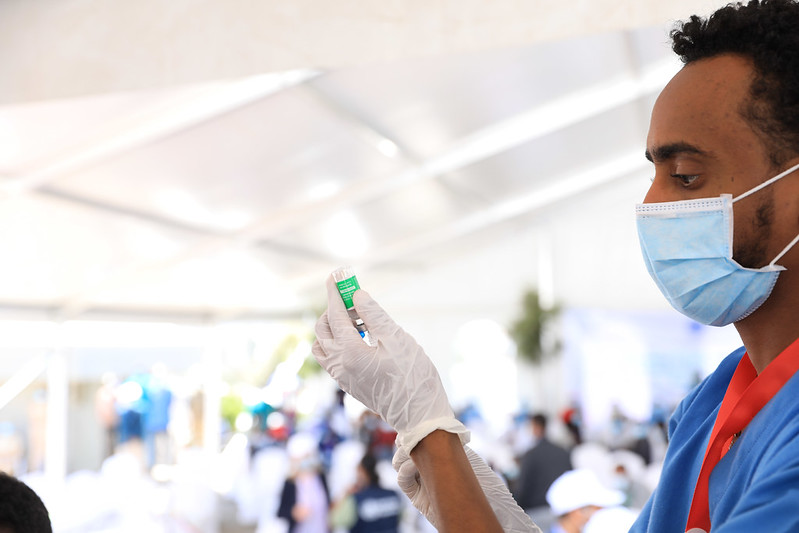The Expansion of Digital Health Care in Ethiopia

Ethiopia is a land-locked country located on the eastern side of the African continent, making up the greater part of the distinctive “Horn of Africa.” It is home to one of the fastest-growing populations in the world, increasing by around 2.5% annually. Ethiopia’s manual, primarily paper-based health care system has proven to be ill-equipped and ineffective at efficiently providing for citizens. The onset of the COVID-19 pandemic made the inadequacy of the country’s current system even more apparent. It propelled the development and expansion of digital health care in Ethiopia.
The Need for Digital Health Care
As of 2020, the World Bank still classifies Ethiopia as a low-income country (LCI). Nearly half of the country’s population lives below the international poverty line. More than 18% were in need of humanitarian assistance in 2021. This is a result of the pandemic among other recent hardships, including drought and internal conflict.
The current life expectancy in Ethiopia is 66.24 years at birth, well below the world average of 72.6 years. This is largely due to the “severe underfunding of the health sector,” resulting in an inadequate number of existing health institutions, the inefficient delivery of medical supplies and great challenges when it comes to extending much-needed health services to those living in pastoral areas.
With 79% of Ethiopians residing in rural lands, this is a huge problem. Furthermore, greater than 50% of the population must walk more than 6 miles to reach the nearest health facility, according to the JDC study. This means that many Ethiopians go untreated for conditions such as malaria, tuberculosis, meningitis and COVID-19. The expansion of digital health care in Ethiopia will help mitigate disparities between rural and urban areas. It could extend the reach of health care providers to those in need.
The United States’ Role
In December 2019, just before the onset of the pandemic, the U.S. Agency for International Development (USAID) partnered with Ethiopia’s Ministry of Health. It invested $63 million in Ethiopia’s health sector. The project launched in Ethiopia’s capital city, Addis Ababa, with the name “Digital Health Activity” or DHA.
The Digital Health Activity aims to modernize Ethiopia’s health information systems in the following ways:
- Consolidating patient medical information by transitioning from paper-based records to an electronic medical record (EMR) system.
- Training both policymakers and health care providers in the utilization of technology to better reach rural Ethiopians in need of health care.
- Partnering with local universities to develop courses in innovative health and inspire young Ethiopians to choose career paths in the health sector.
- Creating a digital COVID-19 surveillance system that allows for better contact tracing and expedited test results.
- Supporting the development of the Digital Health Innovation and Learning Center in Addis Ababa to encourage the continued modernization of Ethiopia’s existing Health Information Systems.
By the end of its first year, the DHA had already made great progress. Its first annual report showed that the DHA provided supervised assistance to more than 3,000 health facilities.
It trained 1,100 health care professionals in open-source software to better collect and manage health data. The DHA also created an online ordering system. This allows health facilities to process orders more efficiently and provide medications to patients in a more timely manner.
Digital Health Care and COVID-19
The Digital Health Innovation and Learning Center (DHILC) experienced its inauguration as the first of its kind in August 2020 in Addis Ababa. The Ministry of Health funded the center in partnership with the Bill and Melinda Gates Foundation. It serves a variety of purposes, including the development and testing of new digital applications. This will help revolutionize health care in Ethiopia as well as the establishment of a call center to offer remote support to users.
The prediction is that the DHILC would solve approximately “85% of users’ minor health information system-related problems.” It has been crucial in the testing and development of applications related to COVID-19.
There are now several apps that aid in the management of COVID-19 in Ethiopia. This includes a toll-free recording app that has provided accurate and reliable COVID-19 health information. Various applications work to educate patients on COVID-19, screen travelers for the virus and deliver timely test results. They provide contact tracing services and help manage the spread of the virus in Ethiopia.
The development of digital health care in Ethiopia was long overdue. But thanks to the innovative efforts of the Ministry of Health and USAID, citizens who once struggled to obtain access to quality health care can now access it remotely.
By providing more accurate information and up-to-date training for professionals, this new age of digital care has the potential to raise Ethiopia from low to middle-income status. It could improve the health and well-being of citizens in every area of the country.
– Hannah Gage
Photo: Flickr
